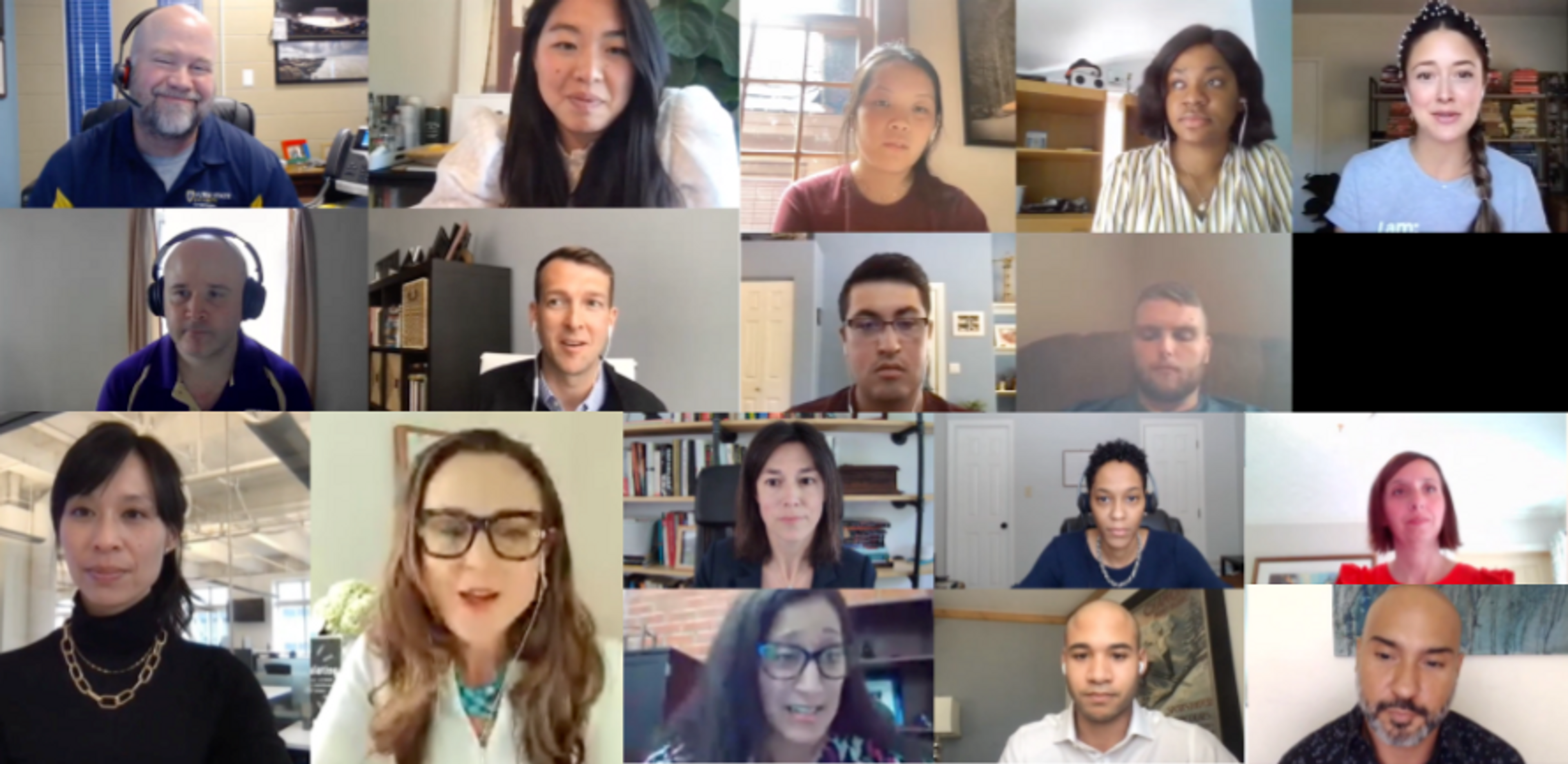On June 3rd and 4th, we gathered over 3,400 career educators from across the country together for Access 2021—Handshake’s annual user conference. The virtual conference was free for all attendees and featured sessions that focused on re-envisioning the future of career education.
Our speakers represented diverse perspectives across the higher education landscape, such as New York Times bestselling author, Lindsey Pollak; verteran education journalist, Paul Fain; and many other Handshake partners.
Below are four key takeaways from the two-day conference.
1. Virtual recruiting is here to stay
As we look to fall 2021 and beyond, it’s clear that—even as colleges reopen—virtual recruiting is here to stay. During the Creating Certainty in Uncertainty session, Kevin Grubb from Villanova University and Todd Good from IBM joined Handshake’s Chief Education Strategy Officer, Christine Cruzvergara, to reflect on the past year and discuss their approach to virtual recruiting in the future.
It's important to acknowledge the pivot that many institutions had to make, but Kevin Grubb mentioned that the “writing was on the wall” for digital-first recruitment before the pandemic and that the past year accelerated their shift.
With the fall approaching, Grubb’s advice to institutions was to first think about their “why”—the purpose of their work as a career center. For Grubb and his team, their “why” is two-fold—to empower students to have agency in their career journey and to make that path more accessible. From there, Grubb said it’s important for institutions to reassess how the “why” is delivered. In Villanova’s case, virtual is the “how of the why.”
According to new survey results from Handshake Network Trends, 87% of students said they still prefer some aspect of virtual recruiting in a post-COVID world. Also, 4 out of 5 employers said they will continue to conduct virtual career events when pandemic restrictions are no longer a concern. While there’s no one-size-fits-all approach, institutions need to rethink the role that virtual will play in their strategy.
2. Be comfortable with change
Change isn’t easy. But if this year has taught us anything, it’s that we’re all capable of driving meaningful change. In our keynote session, Lindsey Pollak spoke about the notion of “recalculating” and how higher education has the opportunity to rethink the future for students. Her five steps for recalculating were especially insightful for the audience—they are:
- Embrace curiosity and creativity
- Prioritize action
- Focus on what you can control
- Know your non-negotiables
- Ask for help
3. Focus on outcomes
Assessing and demonstrating career progress is more important than ever as students, families, and policy makers seek common measures to determine the employment returns from higher education institutions. In our Metrics that Matter panel, Dave Clayton from Strada Education Network, Kristina Francis from JFFLabs at Jobs for the Future, and Andy Chan from Wake Forest University joined Felice Nudelman from the American Association of State Colleges and Universities (AASCU) to discussed the metrics that help institutions articulate the career value they provide to their students.
Andy Chan mentioned that establishing an outcomes-focused data strategy is a “challenging problem” for many institutions, especially those less-resourced, but that it’s necessary.
4. Ensure access and equity in all facets of career services
How do we ensure that students of all backgrounds are equipped to build a great career?
During Access 2021, Christine Cruzvergara spoke in her Welcome Addressabout the opportunity that we have to craft a new future to increase access and deliver more equitable outcomes for students. We also heard this during our Equity, Justice, and Belonging session as our panelists—Michael Ellison, Amelia Parnell, Angie Kamath and Elyse Ashburn—discussed practical ways to redesign career services, particularly for students of color.
Michael Ellison, CEO of CodePath.org, left the audience with some advice on measuring success of career services:
“When you’re thinking about measuring your success from a career services standpoint or job outcome standpoint, measure your success not on your most privileged or most prepared students but on your most disadvantaged students. If you’re designing and measuring on that, it’s going to lead to better programs for everybody.”
View Access 2021 sessions on-demand
If you missed Access 2021 or want to re-watch the sessions, check out the Access On-Demand Recording Hub.
